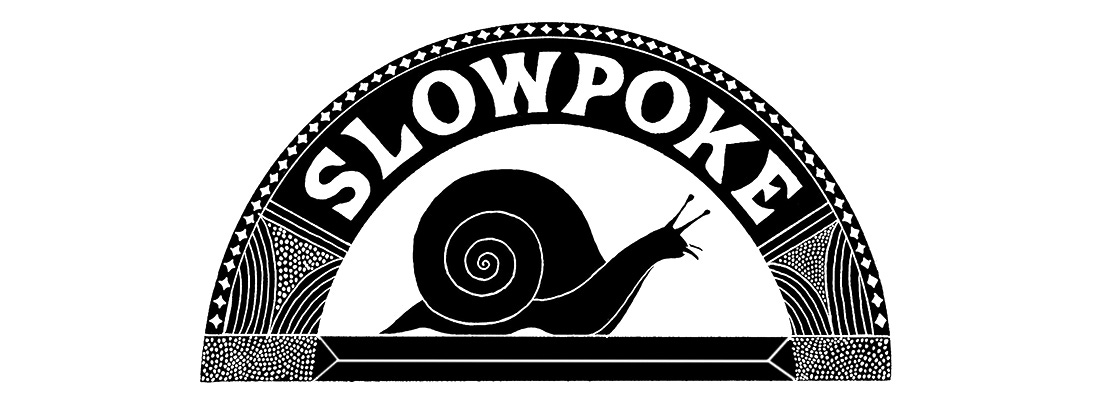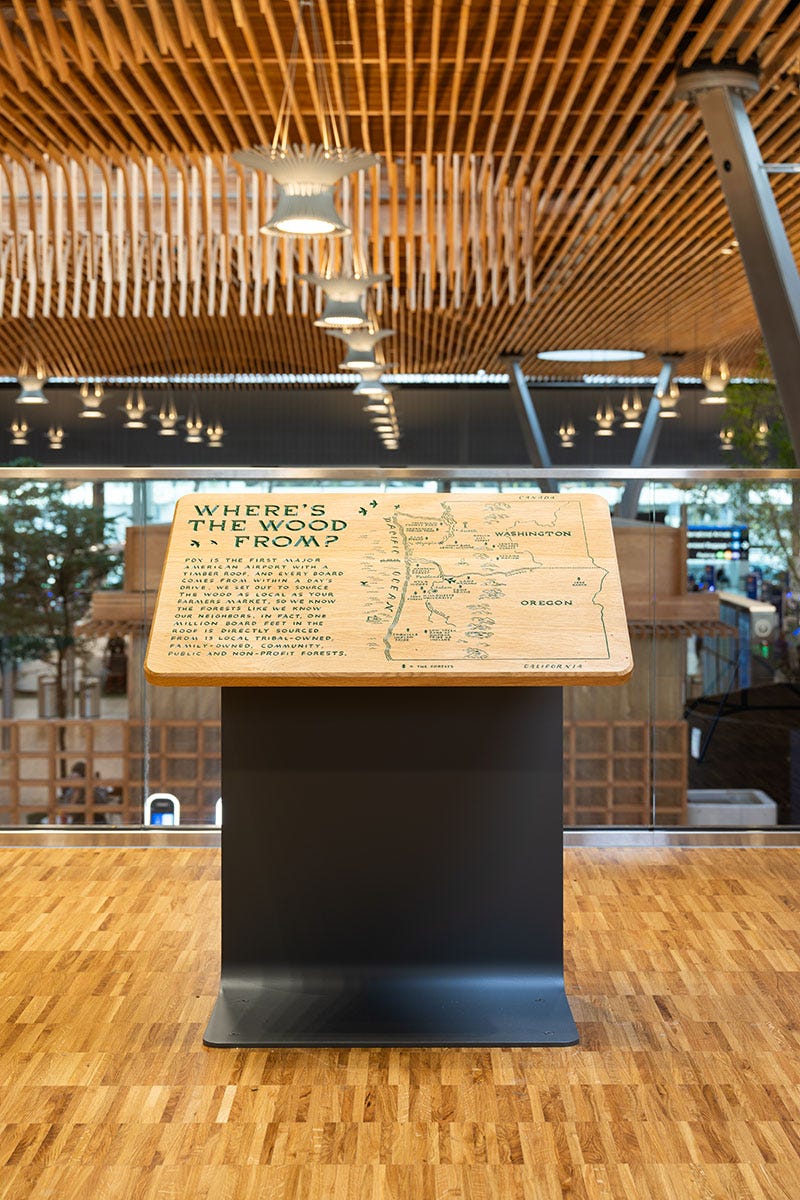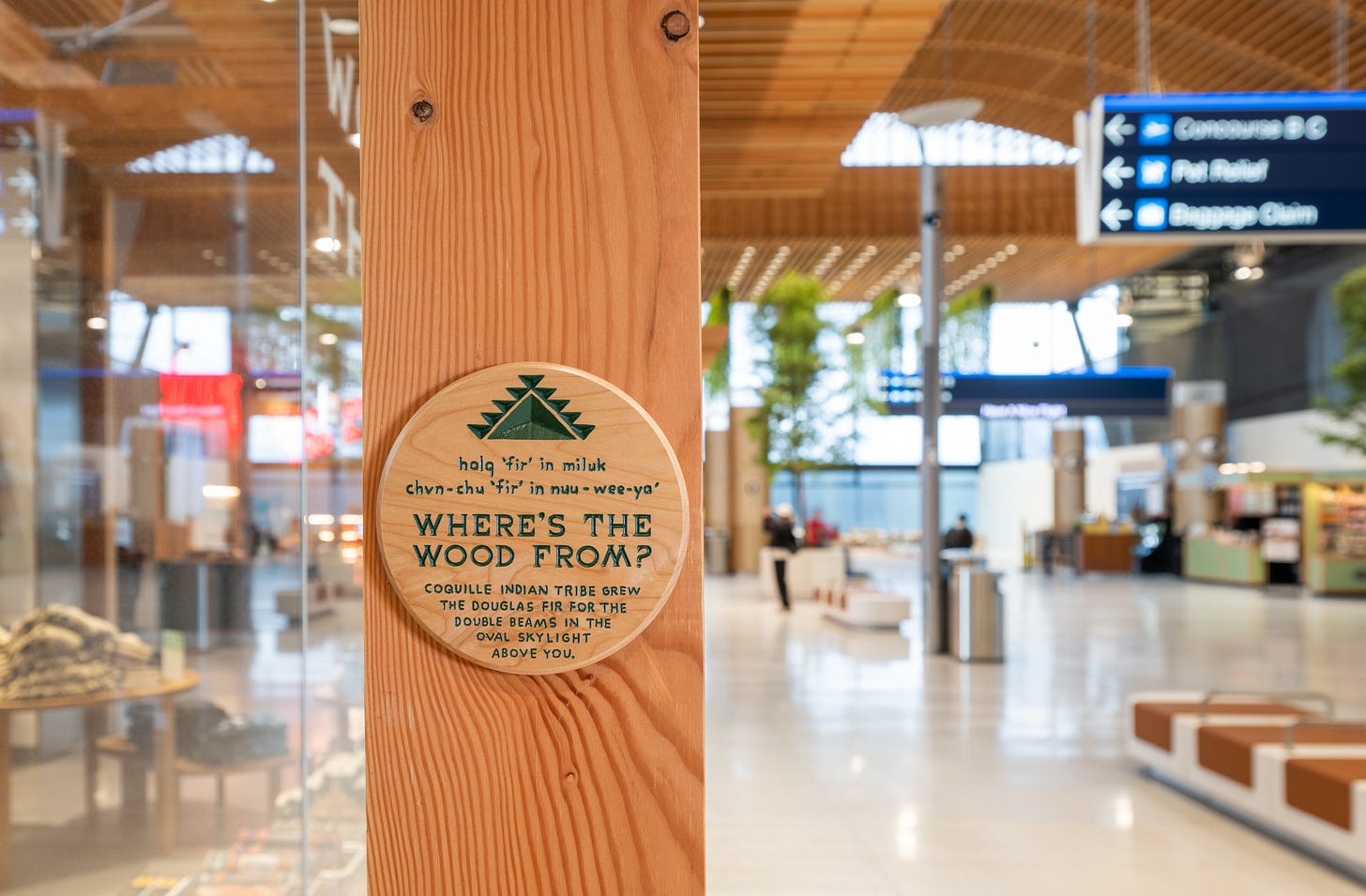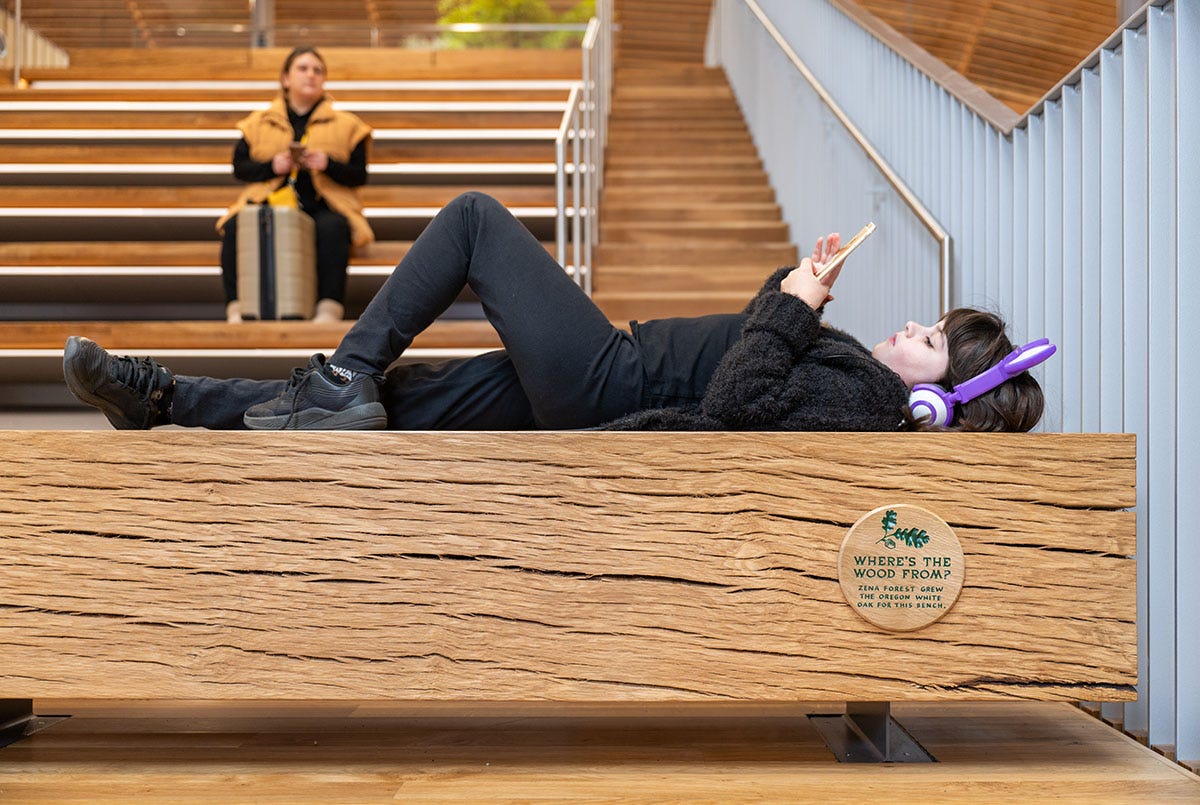If you have a chance to fly through Portland International Airport, you’ll get to see our beautiful new terminal. It’s the largest public works project in Oregon history. And because Oregon has a Percent for Art program, the Port of Portland has a mandate to spend 1% of its massive budget on art. So it is art-filled: glass art, mosaic art, sculptural installations, a dedicated gallery, two 100-foot-wide video installations, the list goes on.
I didn’t expect to care very much about my city’s new airport, but I’m proud of it. The terminal renovation created a lot of well-paid work for a lot of artists and the space is gorgeous.
PDX is the first American airport to feature a mass-timber roof and the sourcing of all of that wood is a big talking point for the Port of Portland and ZGF, the terminal’s architects. One million board feet of lumber can be traced to its forest of origin, all within a day’s drive of the airport. This may not seem like a big deal, but in the timber world - I learned - it really is. PDX partnered with 16 nonprofit, community, tribal-owned, and family-run forests to create a scalable, transparent model for timber sourcing. They worked directly with the managers of these forests, many of them tribal-owned. They worked directly with the mills who agreed to keep this locally-sourced wood separate so its origins could remain traceable. I’m not pretending to know anything about forestry, but I’m told this model is revolutionary.
I was invited to make a series of maps and markers to highlight the local origins of this wood. The idea was to honor and celebrate the regional communities who supplied it. I jumped at the chance.
Taking inspiration from trail signage, I designed maps that are installed on the new terminal mezzanines and a number of markers that are scattered around the main floor. The maps are a nod to the maps of Wildwood. The markers indicate what kind of wood was used for specific areas of the terminal and who grew it: Coquille Indian Tribe, Cow Creek Band of Umpqua Tribe of Indians, Skokomish Indian Tribe, Yakama Nation, and Zena Forest.
We worked with the tribes and Zena Forest to design a symbol for each marker. Yakama Nation and Skokomish Indian Tribe also requested the inclusion of their respective languages. Both the maps and the markers are made of Oregon White Oak.
This was an illustration job that involved a lot of parties and agencies: the Port, the tribes, the architects, the fabricators, and other partners. As you can imagine, it took a while to get things approved by everyone involved. But creatively it was a smooth process and I loved this project. I recognize that timber is an essential part of our lives and regional economy and that it’s the subject of great division in Oregon. It’s hard to reconcile the necessity for logging with environmental concerns, but this wood sourcing model seems to move in the right direction. I care so much about forests, and I was especially honored to collaborate with the native foresters who are their long-time stewards.
Thanks a million to Jen Wick of the Port of Portland, who hired me. Incidentally, she also hired me to do some of my first paid illustration gigs almost 25 years ago when she was the art director for the Portland Mercury. It was a big deal back then to be paid to draw things. All these years later I’m still grateful for it.
If you find yourself in our new terminal with a moment to spare, climb the stairs to the mezzanine and check out the map and the view. And if you’d like to learn more about how the wood was sourced, you can read about it here.
Translated from the Skokomish language, I believe this reads
They are all becoming one.












What a beautiful project to be a part of, Carson! Congrats--to you, and everyone involved!
This is an amazing project and makes me want to visit Portland just so I can fly into the airport and see it.